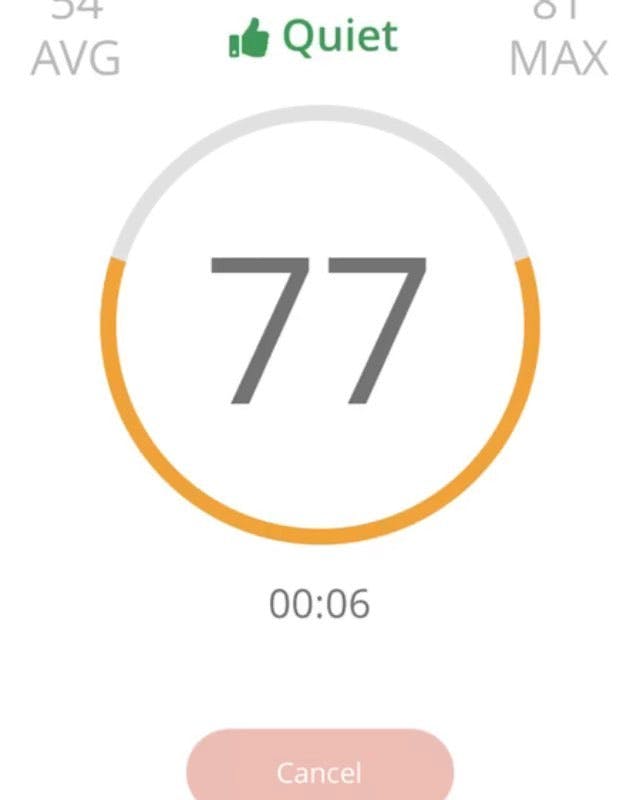Have you recently gone out to a Toronto restaurant with friends or family, struggled valiantly to carry on a conversation over the noisy din, and returned home both frustrated and wondering if you’re losing your hearing?
If so, you’re not alone.
You’re also not imagining things: Canadian restaurants really are getting louder.
According to data gathered from SoundPrint, an app that measures noise, Toronto (and Canadian) restaurants are dangerously loud – even more so than their U.S. counterparts.
Like many great inventions, the fuel that fired the creation of SoundPrint was love. A single New Yorker named Gregory Scott was looking for it – but in vain. As a consequence of childhood meningitis, Scott suffered from permanent hearing loss. When he met up with dates in restaurants and bars, he found it near impossible to make a connection against the constant barrage of music, clanking dishware and other people’s conversations.
Out of curiosity, he began using his cell phone to measure the decibel level of loud environments. With the data he amassed, over time he compiled a list of serene spaces. It dawned on him that if multiple silence seekers, in multiple cities, followed suit, there would be a lot more successful dates. With this in mind, in April of 2018, he launched SoundPrint.

While being able to enjoy a quiet night out is a worthy pursuit in itself, noisy restaurants and bars are also a public health issue. According to the World Health Organization, an estimated 2.5 billion people worldwide will suffer from hearing loss by 2050 and exposure to loud environments is a contributing factor.
Noise-induced hearing loss can occur if you’re exposed to sounds louder than 70 decibels over a 24-hour period. According to data from SoundPrint’s crowdsourcing decibel meter – measured during peak times on busy days – the average decibel level in Canada’s major cities is 78.8. The truth is that noise levels at 40 per cent of Canadian restaurants are consistently loud enough to damage your hearing if exposed to them repeatedly or over a significant chunk of time (a particularly serious problem for restaurant workers).
Based on SoundPrint’s database, average noise levels in Toronto restaurants are actually a little better than the national average. At 77.9 decibels, they’re lower than levels in Vancouver and Montreal – but higher than those measured in New York City. Nevertheless, in Toronto, 33 percent of restaurants’ noise levels are loud enough to cause deafness over prolonged exposure.

Since launching in New York, in 2018, SoundPrint has been downloaded in over 50 countries. Just as people consult Yelp and Google before heading out to a restaurant, now they’re also starting to check out a restaurant’s ratings on the app.
With the data it receives, SoundPrint has begun compiling “Quiet Lists” for various cities. Restaurants that make the cut are nominated by users based on their tranquility. Scott plans to release the curated Toronto Quiet List later this year.
Meanwhile, the app is proving to be a powerful weapon in the fight against noise on several fronts. Backed up by hard evidence, more patrons feel emboldened to complain about decibels levels to restaurant staff. On the app itself, a noise complaint feature gives users the option of having SoundPrint share the data directly with restaurants that, if so inclined, can be connected with acoustic consultants who can help them find tranquilizing solutions to their noise issues.
And yes, there are solutions – some of them more simple than you’d think. One reason restaurants have gotten louder in recent years is due to architectural and design trends. Ironically, a minimalist aesthetic can maximize noise by dispensing with materials that muffle and absorb sounds. Culprits include tightly-spaced tables (without tablecloths); spartan chairs (without upholstery); exposed hardwood floors (without carpeting); open concept dining rooms and kitchens (without partitions); and vast windows (without curtains).
In the meantime, take comfort from the fact that, as noxiously noisy as some Toronto restaurants are, there are also many soothing options. According to SoundPrint, 39 per cent of our city’s eateries fall within the “Quiet” (less than 70 decibels) to “Moderate” (71-75 decibels) range, making them ideal for patrons who want to have their cake – and hear it too.










